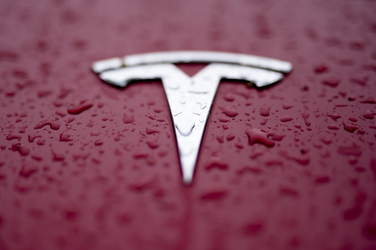
FILE - A Tesla logo is shown on Feb. 27, 2024, in Charlotte, N.C. (AP Photo/Chris Carlson, File)
California firefighters had to douse a flaming battery in a Tesla Semi with about 50,000 gallons (190,000 liters) of water to extinguish flames after a crash, the National Transportation Safety Board said Thursday.
In addition to the huge amount of water, firefighters used an aircraft to drop fire retardant on the “immediate area” of the electric truck as a precautionary measure, the agency said in a preliminary report.
Firefighters said previously that the battery reached temperatures of 1,000 degrees Fahrenheit (540 Celsius) while it was in flames.
The NTSB sent investigators to the Aug. 19 crash along Interstate 80 near Emigrant Gap, about 70 miles (113 kilometers) northeast of Sacramento. The agency said it would look into fire risks posed by the truck’s large lithium-ion battery.
The agency also found that the truck was not operating on one of Tesla’s partially automated driving systems at the time of the crash, the report said. The systems weren’t operational and “could not be engaged,” according to the agency.
The crash happened about 3:13 a.m. as the tractor-trailer was being driven by a Tesla employee from Livermore, California, to a Tesla facility in Sparks, Nevada. The Semi left the road while going around a curve to the right and hit a tree, the report said. It went down a slope and came to rest against several trees. The driver was not hurt.
After the crash, the Semi’s lithium-ion battery ignited. Firefighters used water to put out flames and keep the batteries cool. The freeway was closed for about 15 hours as firefighters made sure the batteries were cool enough to recover the truck.
Authorities took the truck to an open-air facility and monitored it for 24 hours. The battery did not reignite.
The NTSB said all aspects of the crash are under investigation as it determines the cause. The agency said it intends to issue safety recommendations to prevent similar incidents.
A message was left Thursday seeking comment from Tesla, which is based in Austin, Texas.
After an investigation that ended in 2021, the NTSB determined that high-voltage electric vehicle battery fires pose risks to first responders and that guidelines from manufacturers about how to deal with them were inadequate.
The agency, which has no enforcement powers and can only make recommendations, called for manufacturers to write vehicle-specific response guides for fighting battery fires and limiting chemical thermal runaway and reignition. The guidelines also should include information on how to safely store vehicles with damaged lithium-ion batteries, the agency said.
Tesla began delivering the electric Semis in December of 2022, more than three years after CEO Elon Musk said his company would start making the trucks. Musk has said the Semi has a range per charge of 500 miles (800 kilometers) when pulling an 82,000-pound (37,000-kilo) load.
Article Link
Archive
